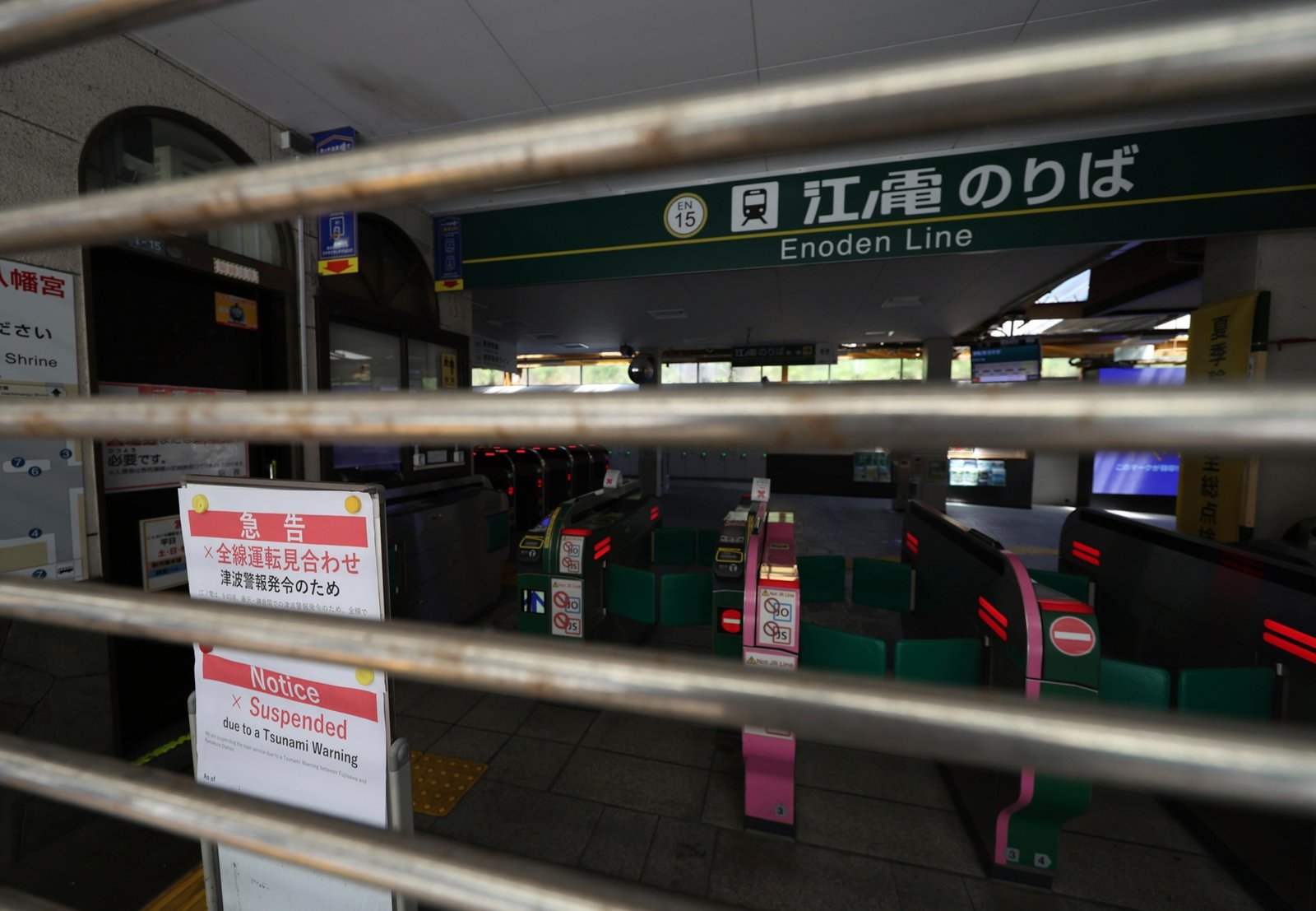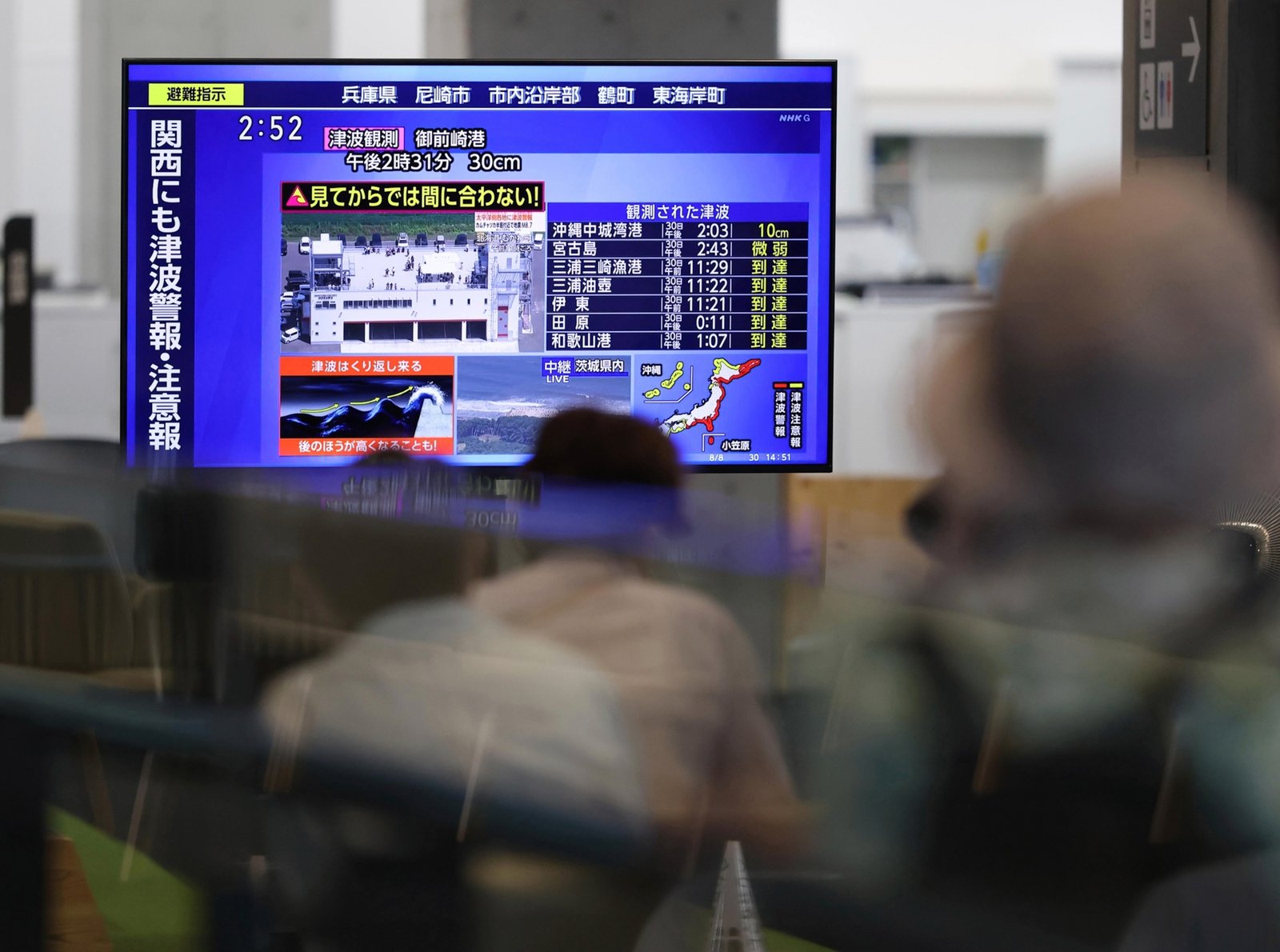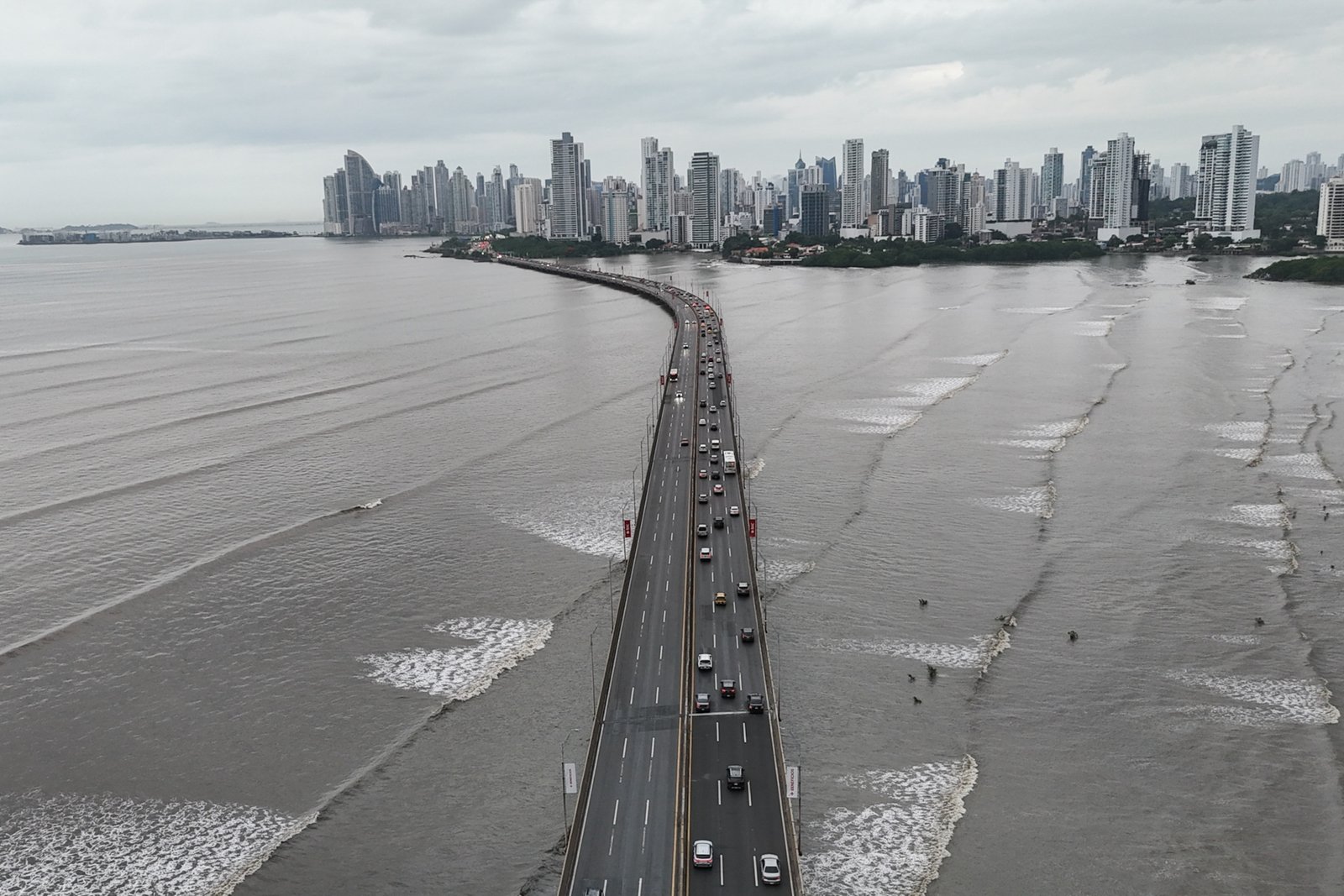Just offshore from Russian’s far-eastern Kamchatka peninsula, a major earthquake shook the region on Wednesday. At magnitude 8.8, it released several times more energy than the largest nuclear bomb ever detonated.
“It’s a massive-scale earthquake,” says Harold Tobin, the director of the Pacific Northwest Seismic Network at the University of Washington.
In fact, Earth hasn’t seen a quake this big since 2011, when a magnitude 9.1 tremblor off the coast of Japan resulted in the Fukushima nuclear disaster. “It’s within the top 10 largest earthquakes ever recorded by seismometers,” says Steven Hicks, an earthquake scientist at University College London. It didn’t just cause the seafloor to jolt upward. “It broke the seafloor,” he says.
And immediately, the danger was clear: The seafloor break generated a dangerous, ocean-spanning tsunami. As a result, tsunami warnings were speedily issued for many of the countries bordering the Pacific Ocean, including the entire western seaboard of North America, as well as parts of Central and South America.
(Here’s what to do to prepare for a tsunami.)
This earthquake took place along a tectonic schism that’s known for creating truly devastating temblors and tsunamis. So far, it looks like the worst-case scenarios of widespread death and devastation haven’t played out. But the tsunami could still impact various shores throughout the day, and powerful aftershocks are occurring, so the danger hasn’t passed just yet.

Countless Adventures for Curious Familes
Limited Time: Bonus Issue Offer
Subscribe now and gift up to 4 bonus issues—starting at $34/year.
What caused this megaquake?
Such extreme events are called megathrust earthquakes or megaquakes because of their sheer size and where they occur. Its epicenter falls within a geologic battleground known as a subduction zone. Here, the Pacific tectonic plate collides with and sinks below the Eurasian plate in what is known as a subduction zone. “Where these two plates collide, the megathrust fault becomes stuck and locked, storing up the accumulated plate motion for hundreds of years,” says Hicks. “This stored energy suddenly gets released in great earthquakes.”
So, it’s not surprising that a major earthquake took place off the coast of Kamchatka. “Big quakes have happened here in the past, so with this one, we knew to expect something there,” says Christine Houser, a geophysicist at the Tokyo Institute of Technology.

In response to tsunami warning, the Enoden train service was suspended in Kamakura City, Kanagawa Prefecture on July 30, 2025.
Photograph by The Yomiuri Shimbun/AP Images

A TV news program reports the issuance of tsunami warning at city hall as shelter after the issuance of tsunami warning in Tanabe City, Wakayama Prefecture on July 30, 2025.
Photograph by The Yomiuri Shimbun/AP Images
According to the U.S. Geological Survey (USGS), this was also a reverse faulting event. This involves a large block of the crust above the active fault suddenly moving up over another block of the crust below the fault. In this case, a fault line ruptured over a length of a few hundred miles in a matter of seconds, releasing as much energy as roughly 240 million tons of TNT. “It’s a big earthquake. There’s no doubt about that,” says Tobin.
The nearest large city was Petropavlovsk-Kamchatsky, on Kamchatka, home to over 180,000 people. At least a quarter of a million people in the region felt severe, damaging shaking, USGS estimates. There have been at least two-dozen aftershocks from this mainshock, including a magnitude 6.9 event; aftershocks like this are expected to continue for several days, at least.
A possible prelude to the main event
Although the megaquake’s location isn’t too strange, there is something unusual about its timing. Back in 1952, very close to today’s colossal temblor, a highly destructive magnitude 9.0 quake struck the region—one that also generated a powerful tsunami.
A gap of several decades between this megaquake and today’s event may seem like a long time. But not for megaquakes. In general, for these major events, “stress builds up, then you have a big earthquake to relieve that stress,” says Houser. And then there’s a gap of perhaps several centuries.
That clearly didn’t happen. “Would I have predicted another nearly-magnitude 9.0 event within only several decades? Probably not,” says Tobin.
You May Also Like
The short period between these two megathrust quakes suggests that these ginormous subduction zones can build up an explosive degree of stress over a relatively short period. And, for the time being, scientists aren’t certain how this happened. “It shows our ignorance,” says Houser.
It’s worth underscoring, though, that the largest of quakes don’t operate according to neatly timed schedules. “It’s not a clockwork,” says Tobin. Understanding why is one of the most crucial open questions in the geosciences—an unsolved puzzle that means that, for now, nobody can predict exactly when the next major quake will take place.

The first waves of the tsunami have arrived Japan’s Pacific coast after the magnitude 8.7 strong earthquake strikes off Kamchatka Peninsula on July 30, 2025 in Shiogama, Miyagi, Japan.
Photograph by The Asahi Shimbun/Getty Images

Cars are at a standstill along the Pan-American Highway in Panama City, Wednesday, July 30, 2025, following a tsunami warning after a earthquake struck off the coast of Russia early Wednesday.
Photograph by Matias Delacroix, AP
On a related note: just over a week prior, a magnitude 7.4 earthquake (which also briefly threatened to generate a tsunami) exploded along the very same subduction zone. Earthquake scientists are now speculating as to whether that significant temblor was some sort of precursor, or at least a possible warning, of today’s catastrophic event.
For now, “we have no way of telling that a magnitude 7.0 will be followed at some point by a larger quake,” says Lucile Bruhat, an earthquake scientist working in the insurance industry. But there is a chance that the magnitude 7.4 quake from earlier this month “could have triggered today’s earthquake. But it will be after analyzing the slip and rupture pattern that we’ll be able to confirm that assumption.”
In some ways, today’s magnitude 8.8 event “is a near-repeat of the magnitude 9.0,” says Tobin. But earthquakes of similar magnitudes can release vastly different amounts of energy, and despite its only slightly higher rating, the 1952 quake was twice as energetic as today’s, which goes some way to explaining why the previous event was more destructive and decidedly lethal.
Tsunami fears haven’t been realized—but it’s not over yet
As frightening as that quake itself would have been, much of the concern immediately focused on the tsunami it undoubtedly unleashed. “These shallow subduction megathrust events cause large tsunamis because the portion of fault that moves during the earthquake reaches close to, if not directly penetrates, the seafloor, displacing vast volumes of water in the sea above,” says Hicks.
(Here’s why no one was prepared for the deadliest tsunami in history.)
Calculating the possible wave heights of tsunamis can be tricky, as the shape and depth profile of the shoreline can really affect its development from location to location. “The wave energy is guided by the depth of the water in any given location,” says Tobin. Either way, based on the nature of the quake itself, the threat was obvious. “Issuing a tsunami warning was absolutely right thing to do.”
Nations across the Pacific were immediately placed on alert. So far, the worst-hit region is that of southeastern Kamchatka, where tsunami waves reaching a heigh of over 16 feet have been observed. Structures have been seen being washed away in some locations, although no deaths have currently been reported. “It’s a very sparsely populated region too, so there wasn’t a lot in harm’s way, fortunately,” says Tobin.
Meanwhile, a vast volume of water was pushed out into the wider ocean, triggering evacuation notices in Japan, several Pacific islands, and, eventually, across Hawaii. In Japan, initial smaller tsunami wave had heights of around one foot. But later, waves as high as 4.3 feet were recorded, with the possibility of waves double that height possible for some shorelines. Hawaii has also seen waves several feet high.
Aftershocks—including those capable of generating smaller tsunamis—will continue for some time. But even if the damage from the mainshock’s tsunami is still being assessed, it seems much of the Pacific has dodged a decidedly grim fate. “It’s kind of looking like the amplitude of the tsunami is less than at least the worst-case scenarios,” says Tobin.


